Pipeline Pigging, CFD Simulation, ANSYS Fluent
$80.00 Student Discount
- The present problem simulates the pipeline pigging using ANSYS Fluent software.
- We have designed the geometry using Spaceclaim software and created the mesh on this geometry using ANSYS Meshing software. The mesh type is unstructured with 659,988 cells.
- The Dynamic Mesh method is used to simulate the motion of pigging into the pipes
- Remeshing and Smoothing sub-models took over the deforming and regenerating of elements
To Order Your Project or benefit from a CFD consultation, contact our experts via email ([email protected]), online support tab, or WhatsApp at +44 7443 197273.
There are some Free Products to check our service quality.
If you want the training video in another language instead of English, ask it via [email protected] after you buy the product.
Description
Pipeline Pigging, CFD Simulation, ANSYS Fluent
Introduction
In this project, the pipeline pigging is investigated using ANSYS Fluent software. In pipeline transportation, pigging involves using pipeline inspection gauges or devices called pigs or scrapers to perform maintenance operations, particularly to clean large-diameter pipes. The pig starts to move while the valve is closed, and there is only air in the domain. The pressure on the surface of the device and the central plane in the pipes are discussed. The place where two pipes meet each other is critical in case of pressure.
The geometry of the solution has been drawn via SpaceClaim software. Next, the elements are generated in ANSYS Meshing software in tetrahedra type, which is suitable and compatible with ANSYS Fluent for the deformations and remeshing due to the movement of the device. Eventually, we obtained a high-quality mesh file with a total number of 659,988 volume cells.
Methodology
The Dynamic Mesh method is used to simulate the motion of pigging into the pipes, and the Remeshing and Smoothing sub-models took over the deforming and regenerating of elements in ANSYS Fluent software.
conclusion
As can be seen, the value of the static pressure parameter on the surface of the device is extracted, and the changes in this parameter are obvious in different views through the pipeline. Also, an animation is exported, which shows the continuous movement of the pig from the first second until it approaches the outlet boundary condition.
If you are looking to clean a pipeline, it is important to consider the type of fluid that may be present inside the pipeline. Water and oil are two common fluids that may be found in pipelines. In such cases, the project can also be modeled to accommodate the presence of these fluids. This will ensure that the cleaning process is carried out effectively and efficiently.
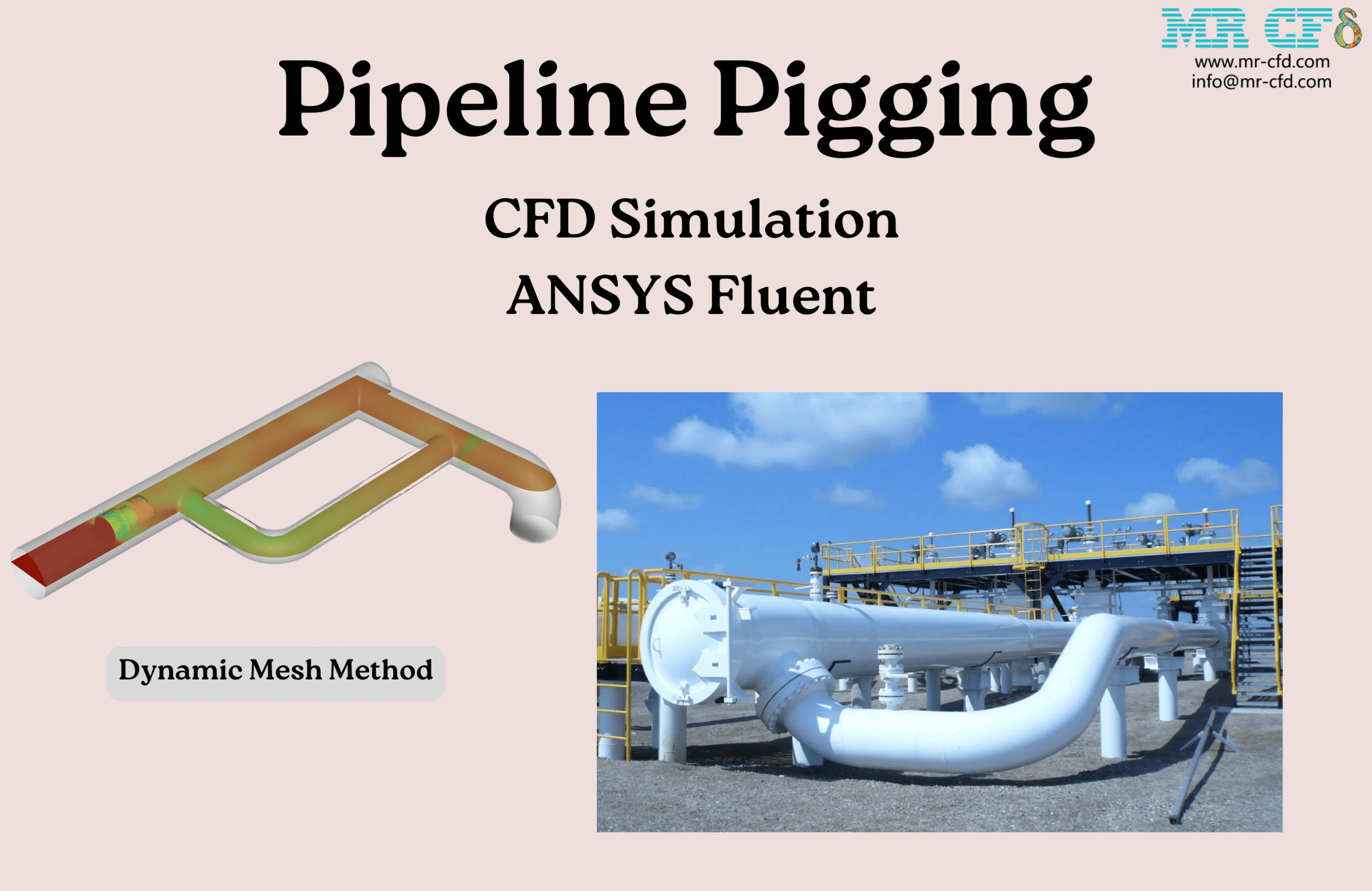
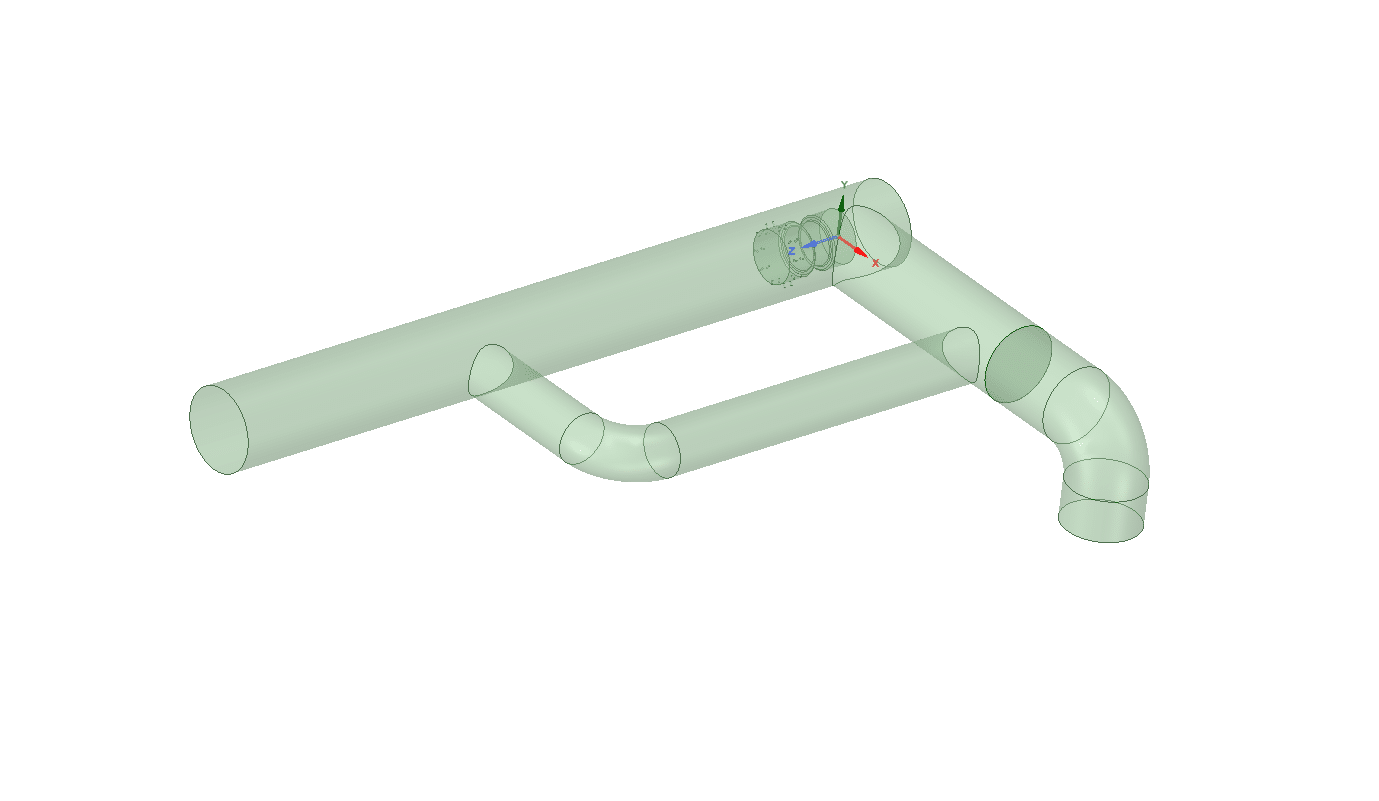

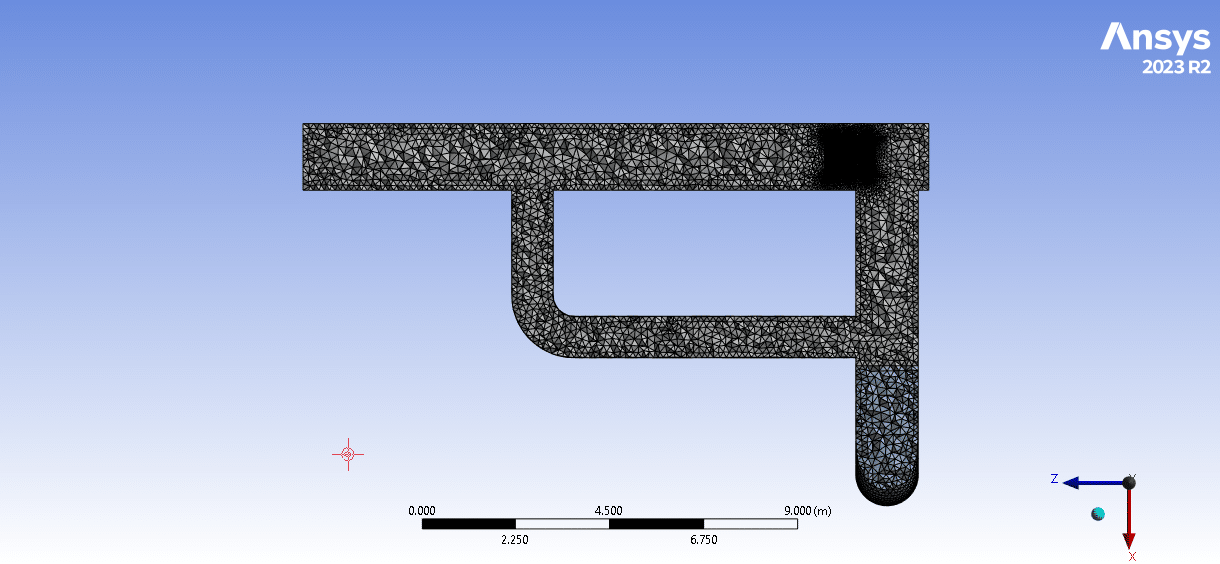
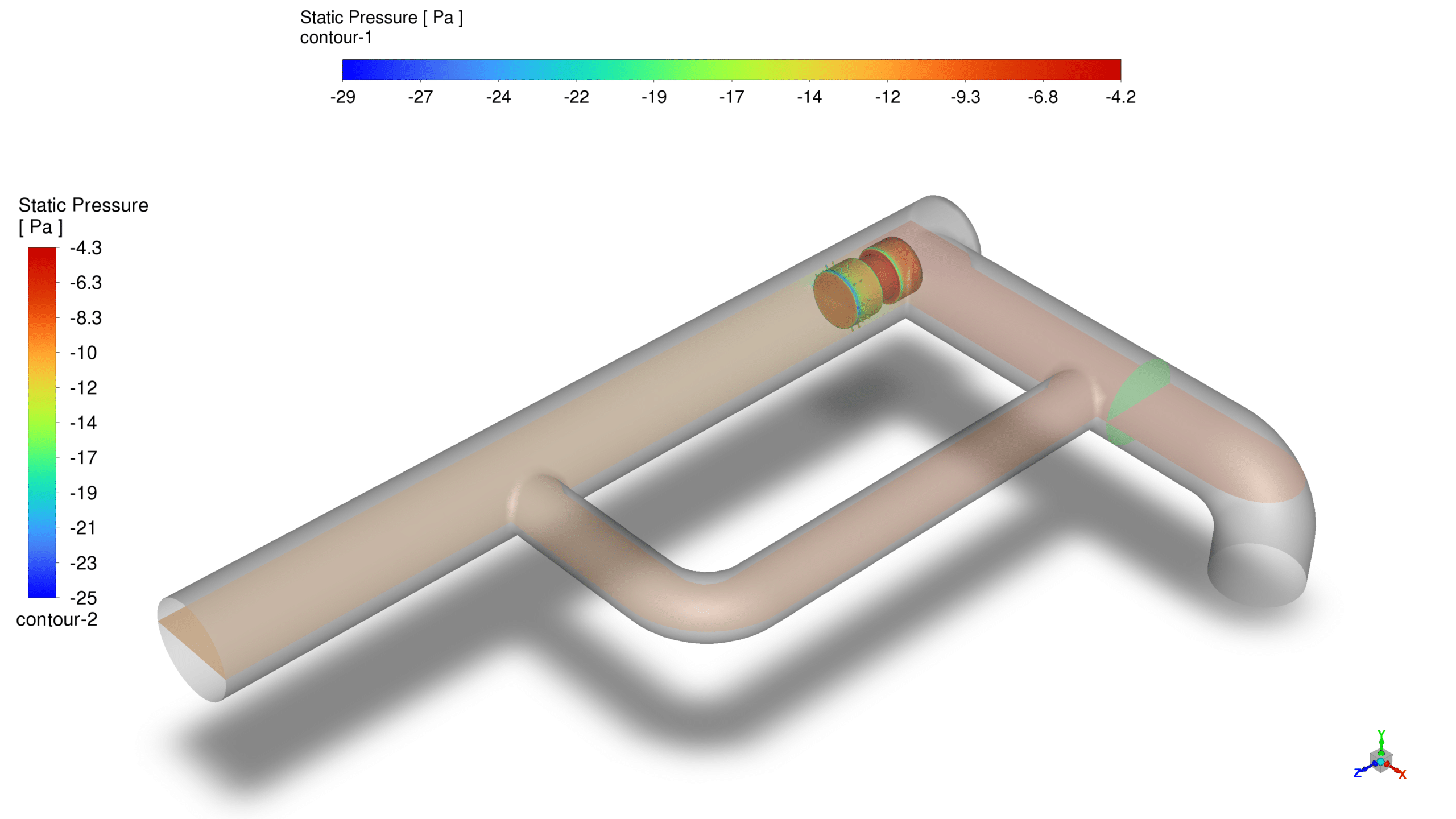
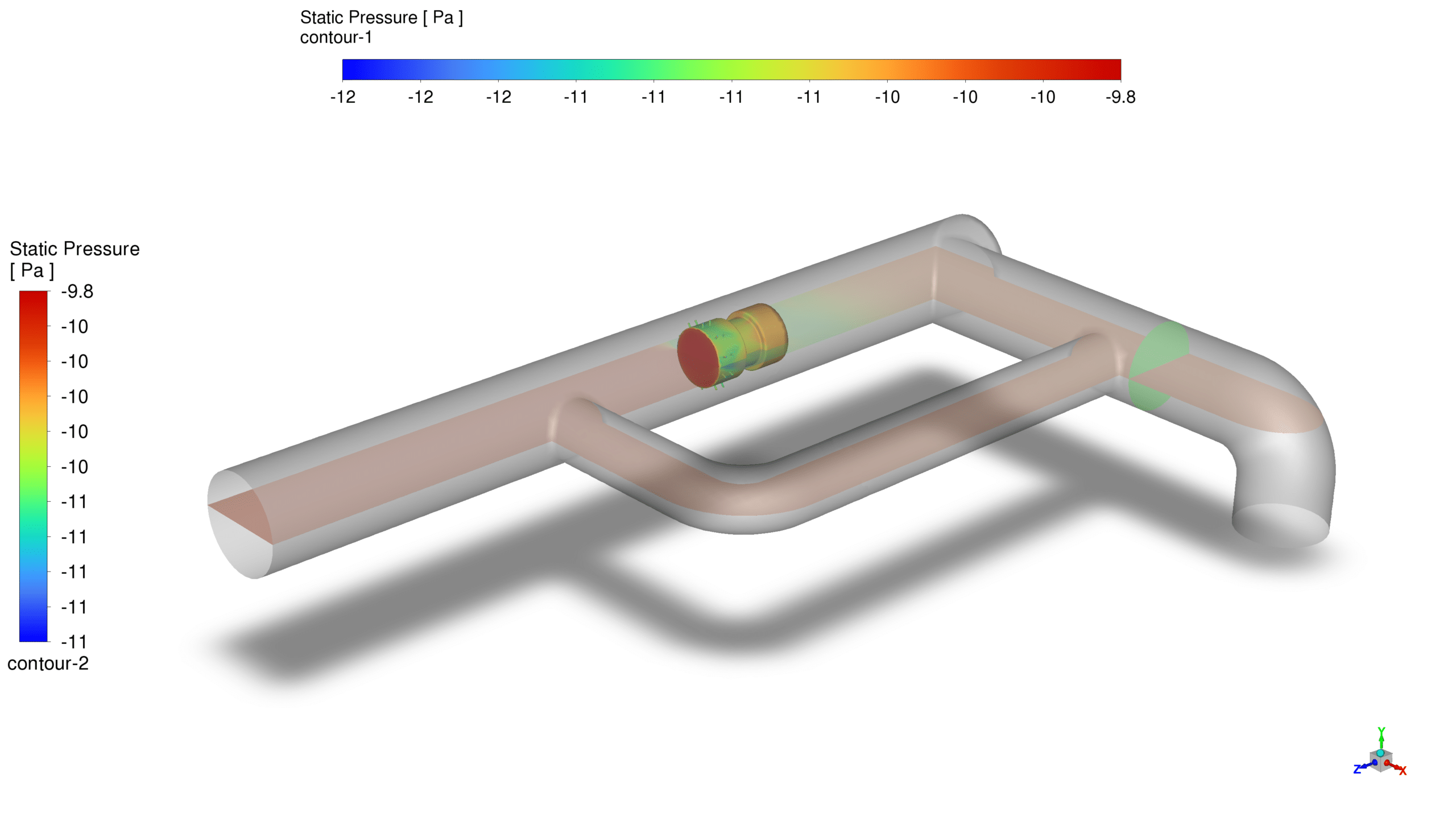
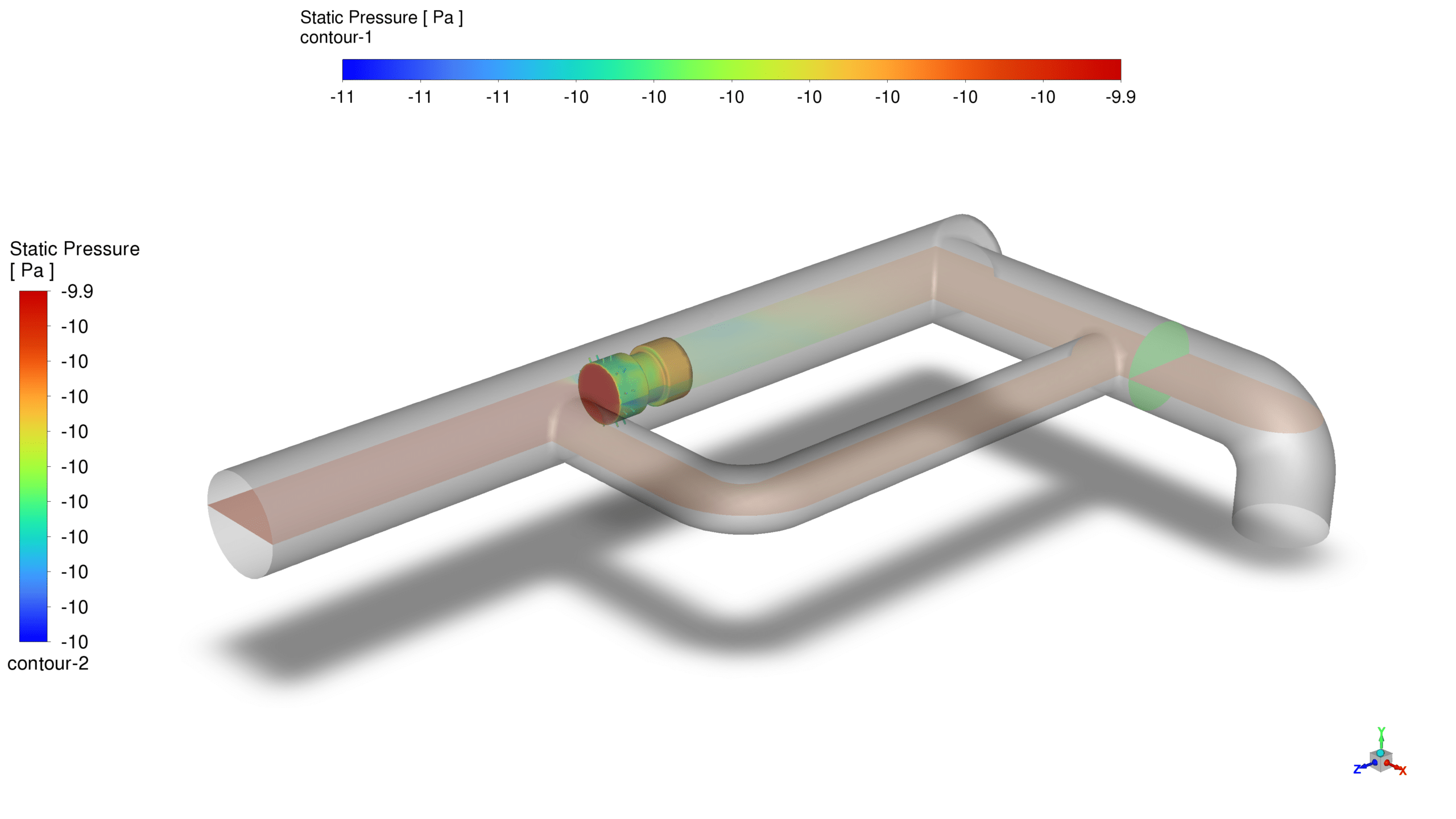
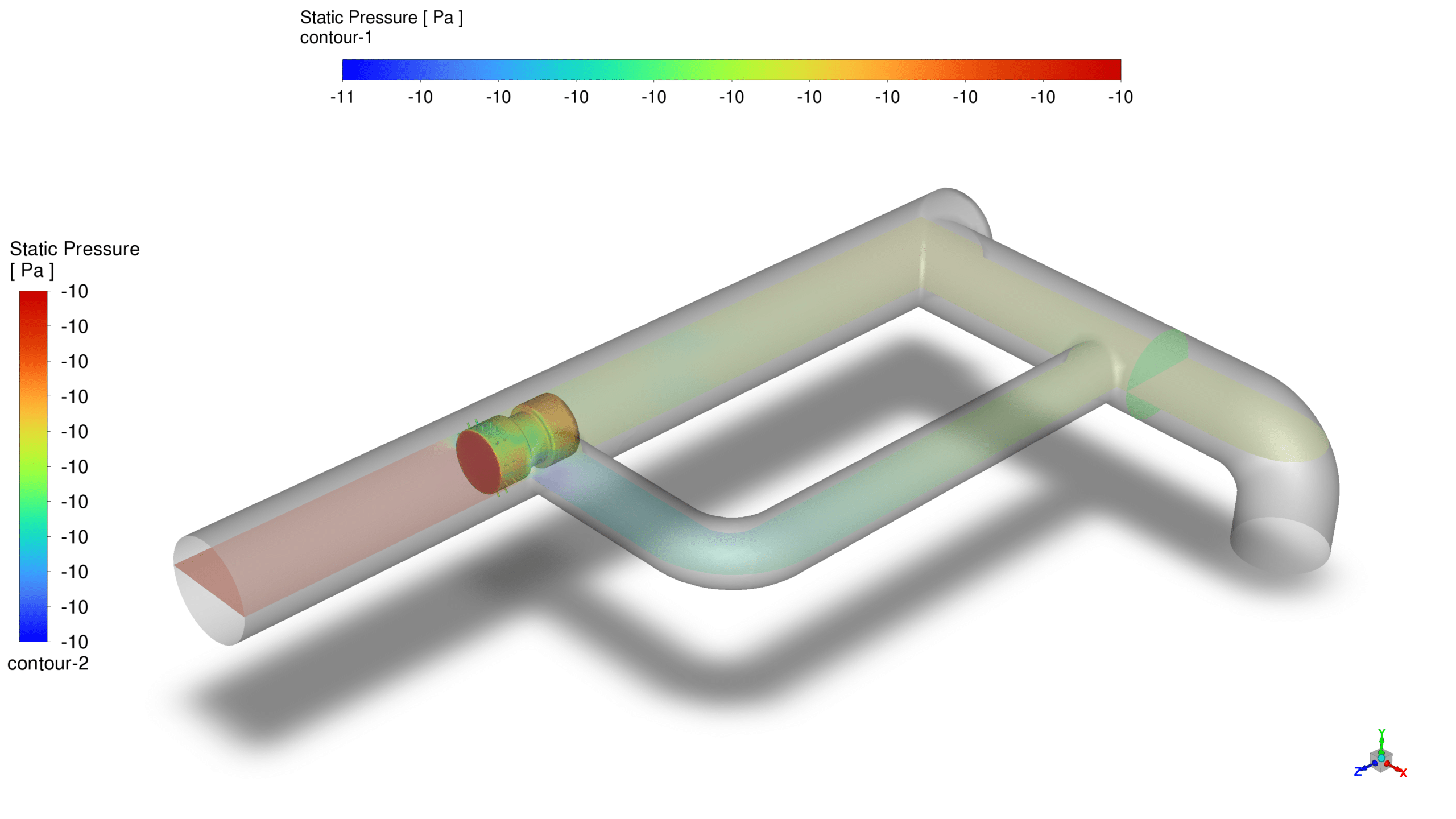

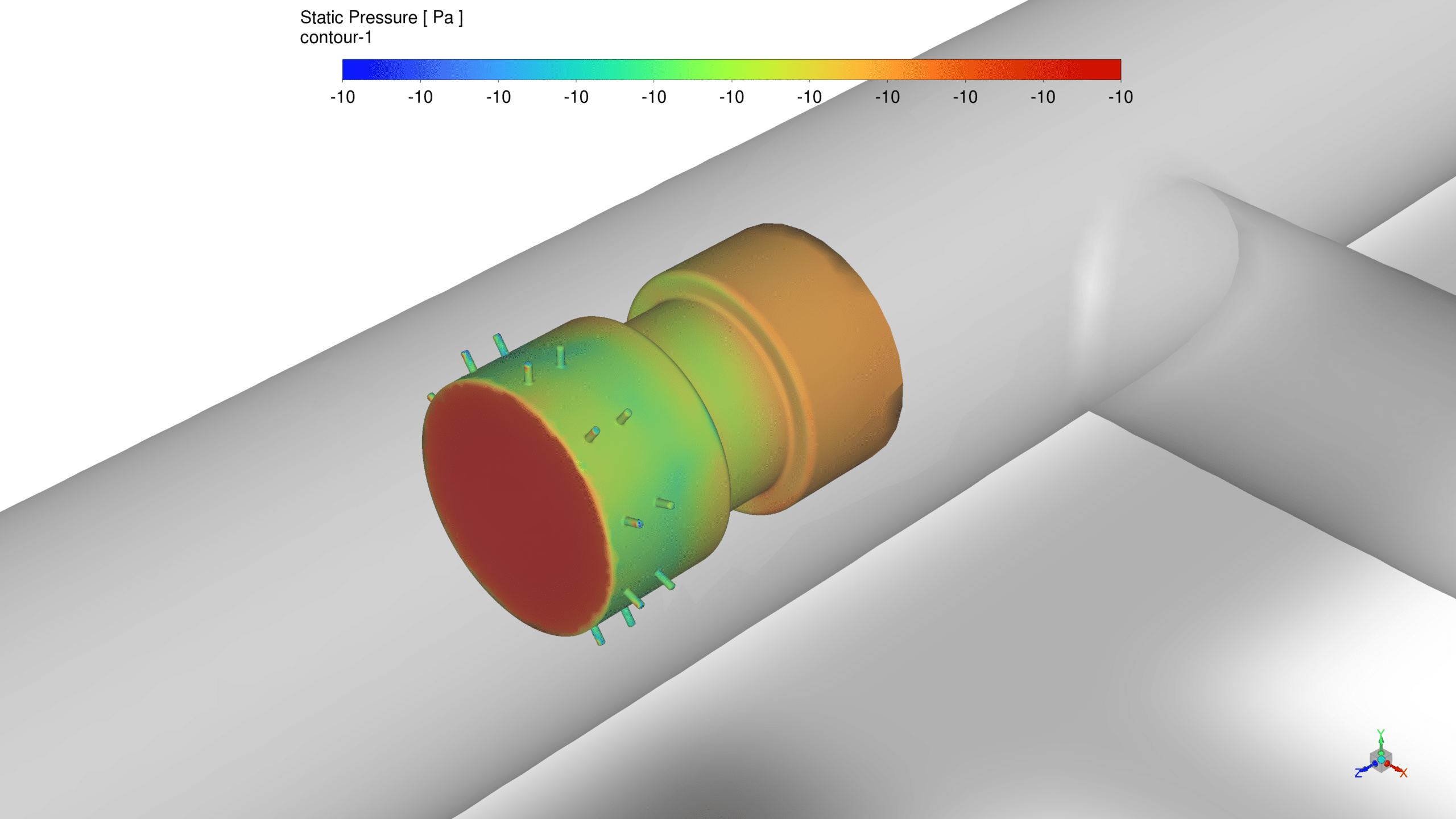
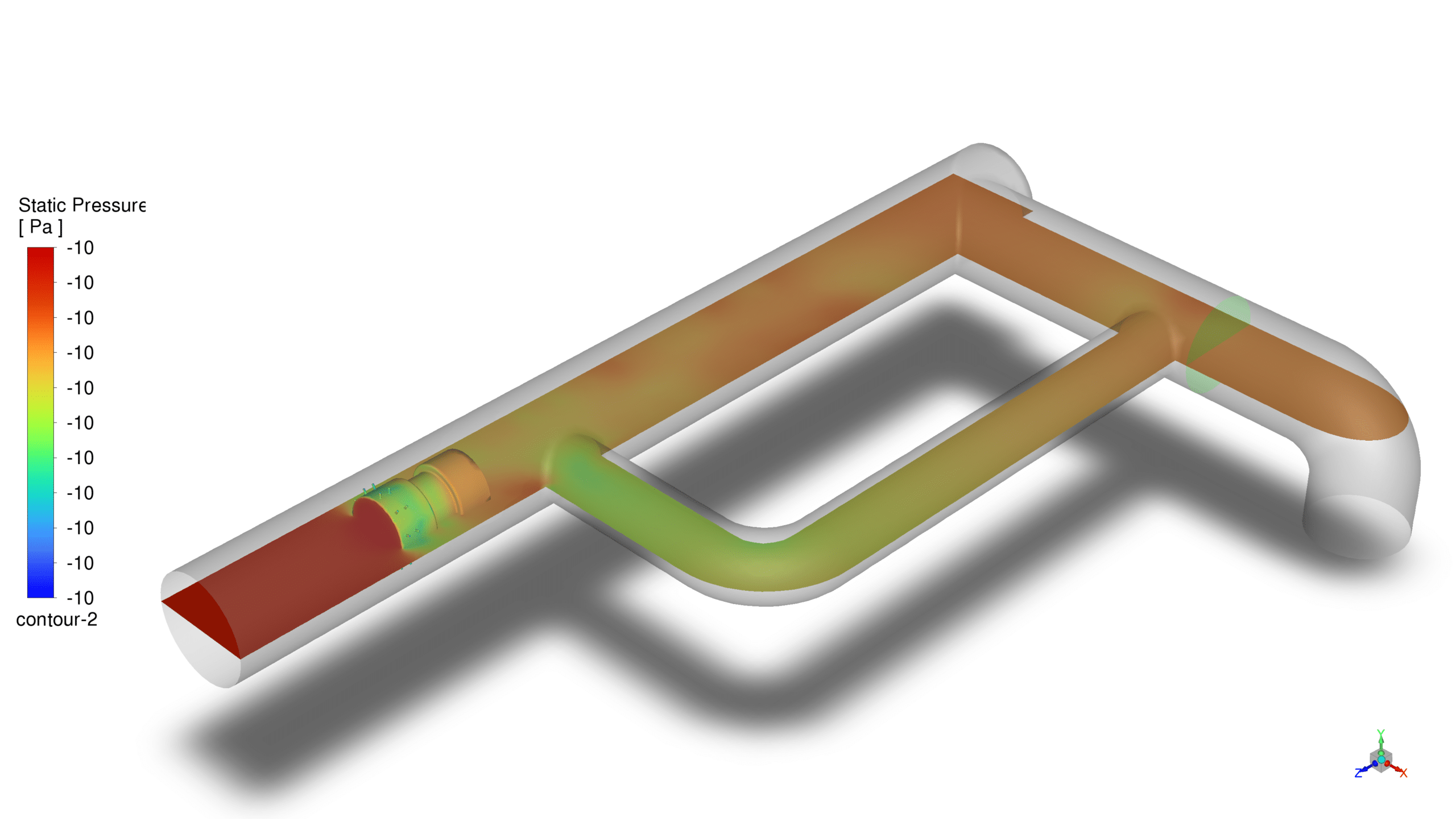

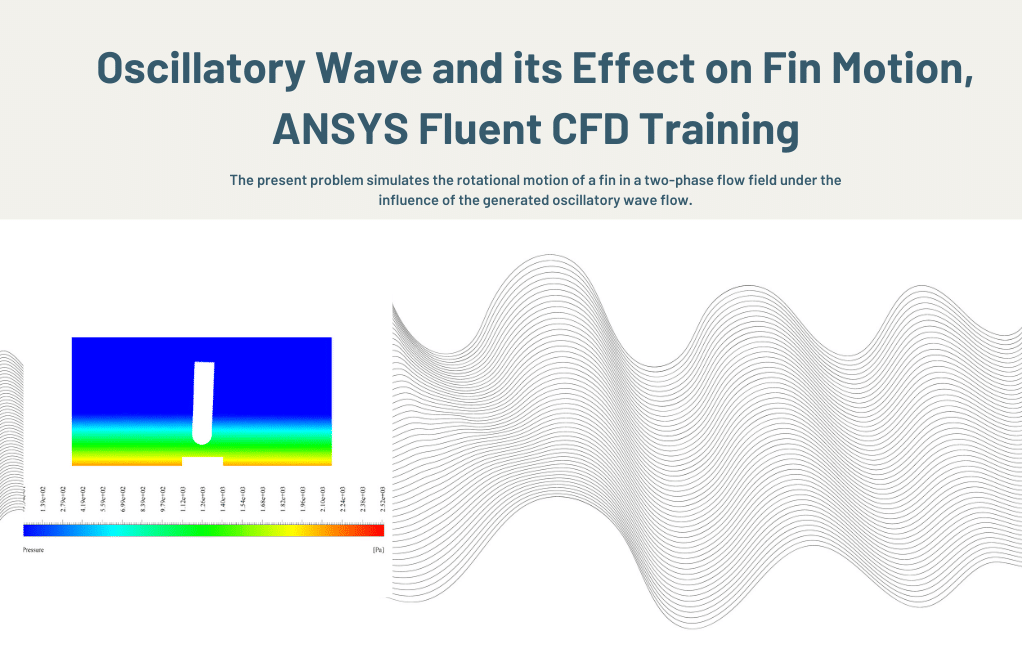
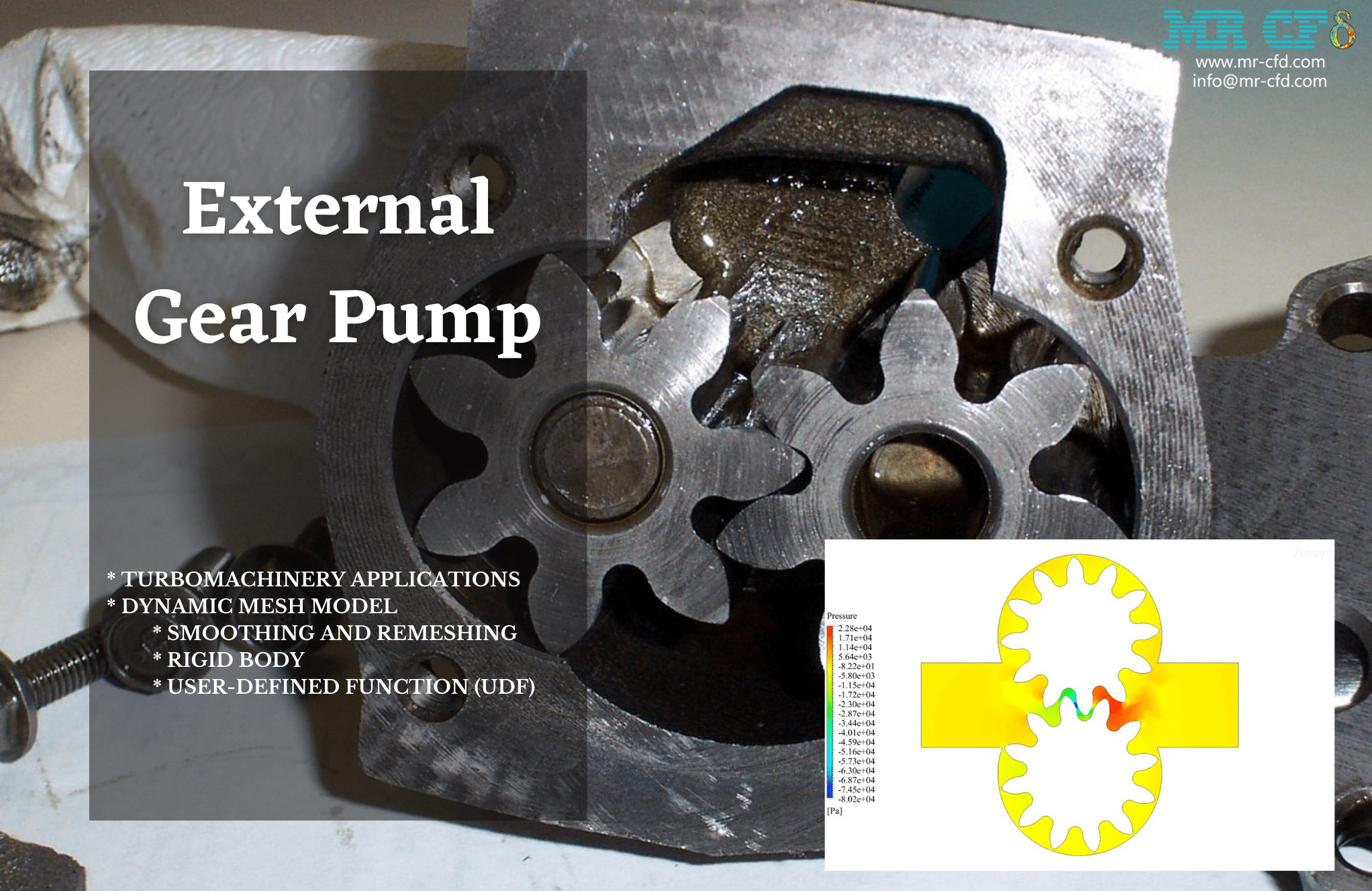
Mrs. Samantha Moen –
The description mentions using both Remeshing and Smoothing techniques for the dynamic mesh. Can I get a further explanation on how each contributes to capturing the movement of the pig device accurately?
MR CFD Support –
Certainly! When using Remeshing, the ANSYS Fluent software system automatically adjusts the size and distribution of mesh elements in response to the motion of the pig, to ensure that the mesh remains fine and accurate where it’s needed. In areas where the mesh can become too distorted due to this motion, it will regenerate the elements to keep the quality of the simulation high. Smoothing, on the other hand, makes small adjustments to the mesh element locations to prevent excessive skewness or stretching that could affect solution accuracy. Together, both methods help to maintain a high-quality mesh that accurately captures the movement of the pigging device through the pipeline.
Amy Heaney –
How do pigs in the pipeline pigging simulation cope with different types of fluids like water and oil? Is there a particular setup in the ANSYS Fluent model to handle these scenarios?
MR CFD Support –
In the ANSYS Fluent model for pipeline pigging, we can set up different materials and phases to mimic the scenario where different fluids like water and oil are present in the pipeline. Multiphase flow models such as the Volume of Fluid (VOF) method or the mixture model can be implemented to capture the interaction between the pig and various fluids. Appropriate material properties and boundary conditions need to be established to ensure accurate simulation of the pigging process in the presence of different fluids.
Nelson Walker –
Is it possible to adjust the simulation parameters to different pigging devices like foam pigs or intelligent pigs, and if so, how would these changes impact the resulting pressure and movement data?
MR CFD Support –
Absolutely, the simulation parameters can be altered to match different types of pigging devices, such as foam pigs or intelligent pigs. The pressures, friction, and specific design factors unique to each type of pig would be accounted for. For foam pigs, you might see less pressure resistance and more flexibility, while intelligent pigs may have different sensors that affect the dynamic mesh and remeshing due to their perhaps irregular shapes and functions during movement.
Leland Hoeger MD –
Is the simulation capable of modeling the pigging process for different fluids like oil or gas, and are the effects of the fluid on the pig’s movement and the cleaning process taken into account?
MR CFD Support –
Yes, the simulation can model the pigging process for different fluids including oil or gas. ANSYS Fluent’s multiphase flow capabilities allow us to account for the specific properties and behaviors of various fluids, ensuring that the effects on the pig’s movement and the efficiency in the cleaning process are appropriately simulated.
Laisha Lehner –
I’m curious – does this simulation also track other performance parameters like wall shear stress or pig speed variation during the cleaning process?
MR CFD Support –
No, the primary focus of this simulation is on the static pressure on the surface of the pigging device and how it changes as the pig moves through the pipelines. However, the simulation method used can be set up to track additional performance parameters like wall shear stress and speed variations if detailed analysis on those aspects is required.
Miss Rhea Kassulke MD –
Is it possible to simulate pigging in a pipeline containing different fluids, not only air?
MR CFD Support –
Yes, you can simulate pipeline pigging using ANSYS Fluent in pipes containing different fluids like water or oil. The software allows setting up multi-phase flow conditions to model and analyze the cleaning process considering the interactions between the pig device and the particular fluid present in the pipeline.
Maybelle Hane –
Just wanted to drop a note saying I thoroughly enjoyed your article on the CFD simulation of pipeline pigging. The detail on the methodology and the use of the Dynamic Mesh method was quite informative. It’s awesome to see such complex simulations explained in a way that’s accessible and understandable.
MR CFD Support –
Thank you so much for your kind words and appreciation of our work on the CFD simulation project for pipeline pigging. We are thrilled to hear that you found the information both informative and accessible. It’s our aim to provide high-quality, detailed, and user-friendly resources that can help our clients and readers understand complex simulations. Your feedback means a lot to us, and we’re grateful for customers like you who take the time to share their experiences. If there’s anything else we can help with in the future, please do not hesitate to reach out.
Rex Schaefer –
I am impressed by the mesh quality in this simulation. Could you give me more insight into why tetrahedra cells are compatible especially for pipeline pigging simulations?
MR CFD Support –
Thank you for the compliment on the mesh quality. Tetrahedra cells are particularly useful for complex geometries because they can easily conform to curved surfaces and accommodate the motions involved in dynamic mesh simulations, like those seen in pipeline pigging. Because pigs often change shape and position to traverse pipeline features, tetrahedrons can adapt during remeshing and smoothing iterations to accurately capture the dynamic interface between the pig and the pipeline wall.
Jorge West –
Is there any specific reason for choosing tetrahedra-type elements for the mesh?
MR CFD Support –
Yes, tetrahedra-type elements are selected for this mesh because they are able to conform well to complex geometries and can handle the dynamic changes and deformations effectively during the pipeline pigging simulation process in ANSYS Fluent.
Gustave Zulauf V –
The review is fascinating and the simulation looks comprehensive. I’m curious, how does the presence of different fluids, like water or oil, affect the pigging process in the simulation?
MR CFD Support –
Thank you for your kind words and interest in the pipeline pigging simulation! The presence of different fluids such as water or oil changes the pigging process mainly due to fluid properties like density, viscosity, and surface tension. These characteristics need to be accurately represented in the simulation to predict how the pig moves through the pipeline and its efficiency in cleaning or inspecting the pipeline. Variable fluid properties can also affect computational aspects such as meshing, solution stability, and runtime, thus are taken into careful consideration when setting up a CFD simulation for pipeline pigging.
Tara Pacocha –
I was delighted with the simulation clarity, particularly the dynamic mesh handling! Could you share what sort of computational resources are usually needed for handling a simulation as complex as the Pipeline Pigging in ANSYS Fluent?
MR CFD Support –
We appreciate your positive feedback! Typically, complex simulations like Pipeline Pigging in ANSYS Fluent require robust computational resources. We generally recommend a multi-core processor, at least 16GB of RAM, and a powerful graphics card to visualize the results efficiently. The precise requirements depend on the specific simulation’s size and complexity. More detailed inquiries can be addressed to our support team who can provide tailored advice for specific projects.
Bertha Green –
I just finished reviewing the Pipeline Pigging CFD Simulation course by MR CFD, and I’m truly impressed! The explanations were clear, and the animations provided a vivid understanding of the pig movement within the pipeline. Fantastic learning tool for visualizing fluid dynamics in pipeline maintenance.
MR CFD Support –
Thank you for your positive feedback on the Pipeline Pigging CFD Simulation course! We’re delighted to hear you found it to be a vivid and clear learning tool. If you have any more questions or need further assistance in understanding fluid dynamics in pipeline maintenance, feel free to reach out to us.
Grover Tillman I –
The review on Pipeline Pigging CFD simulation was clear and descriptive! Really appreciate the step-by-step breakdown.
MR CFD Support –
Thank you for your kind feedback! We’re thrilled to hear that our documentation on the Pipeline Pigging CFD simulation was helpful and easy to follow. Providing a clear understanding to our customers is always our goal. If you have any further questions or another project in mind, feel free to reach out to us!
Janiya Beahan –
I’m curious about how the presence of different fluids like water and oil in the pipeline affects the movement and efficiency of the pig within the pipeline. Can the simulation be adapted to include these variables, and if so, how would it be approached?
MR CFD Support –
The simulation can definitely be adapted to include different fluids such as water and oil in the pipeline, which could affect the pig’s movement and efficiency due to varying properties like density and viscosity. To simulate this, a multi-phase flow model could be employed in ANSYS Fluent that accounts for the interaction between the pig and the various fluids. This approach would involve setting up additional boundary conditions and selecting appropriate formulations to capture the behavior of mixed fluids and their impact on the pigging process. Various scenarios could then be analyzed to optimize pig design and operational parameters for effective pipeline cleaning under different conditions.
Erna Raynor I –
The animation that shows the continuous movement of the pig—can you specify if it clearly visualizes the dynamic interaction between the pig and the pipeline during the cleaning process?
MR CFD Support –
Yes, the animation does indeed provide a clear visualization of the interaction between the pig and the pipeline. It demonstrates the pig’s movement through the pipeline and how the pressure on the surface of the pig changes, helping the viewer understand the effectiveness of the cleaning process over time.
Prof. Christ McDermott –
I appreciated learning from the Pipeline Pigging simulation about the pig’s pressure interaction during maintenance operations in pipes. Simply great insight!
MR CFD Support –
We’re delighted to know that you found the Pipeline Pigging simulation insightful and that it has enhanced your understanding of pressure interactions during maintenance operations. Thank you for your positive feedback!
Dr. Trycia Bashirian V –
This simulation seems impressive! How accurately can the motion of the pig be tracked throughout the pipeline?
MR CFD Support –
Thank you for your positive feedback! In the pipeline pigging simulation utilizing ANSYS Fluent, the motion of the pig is tracked using the Dynamic Mesh method which enables us to closely monitor the pig as it moves through the pipeline. The Remeshing and Smoothing techniques ensure that the mesh adapts to the pig’s movement, which allows for accurate representation of the pig’s location and the pressure changes associated with its traversal through the pipeline. Animations exported from the simulation further demonstrate the pig’s continuous movement, giving precise insights into the pigging process.
Bradly McDermott –
The animation of the pig’s continuous movement was incredibly explanatory. Great to see the practical aspect so clearly.
MR CFD Support –
Thank you for your positive feedback! We are glad that our CFD simulation and the included animation effectively demonstrated the pigging process and helped in understanding the practical movements involved. If you have further inquiries or need additional information, don’t hesitate to ask.